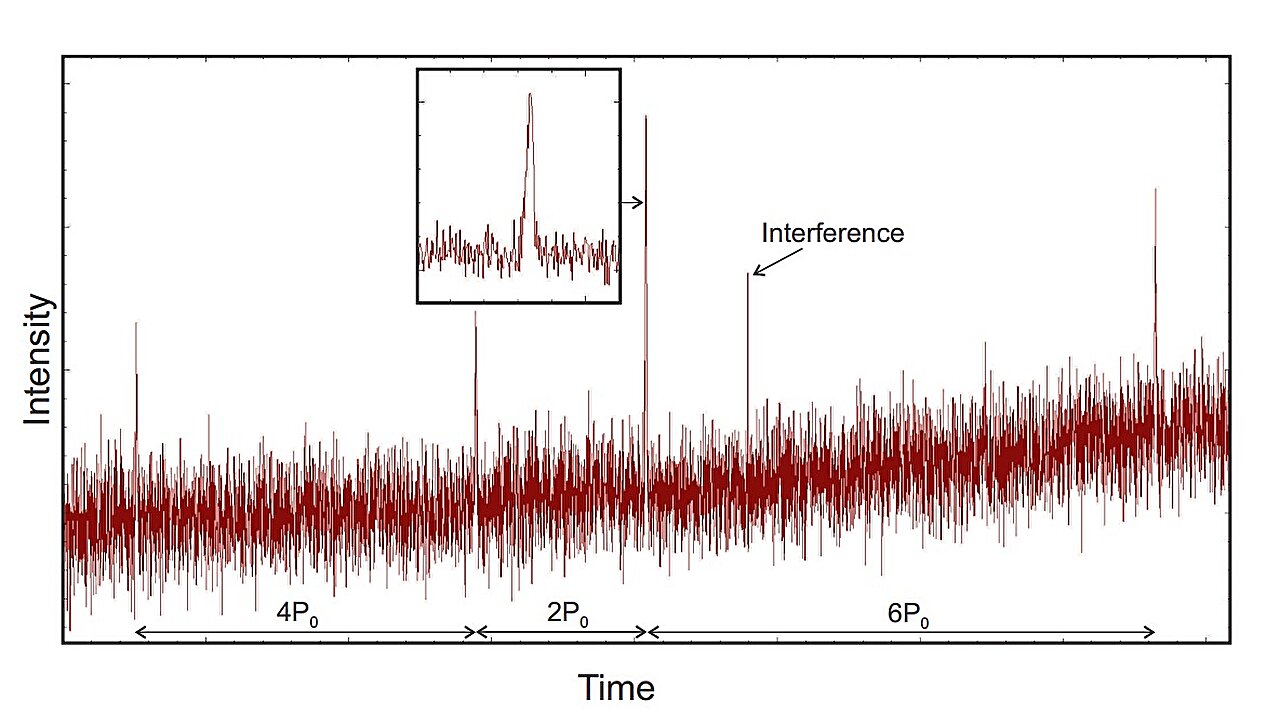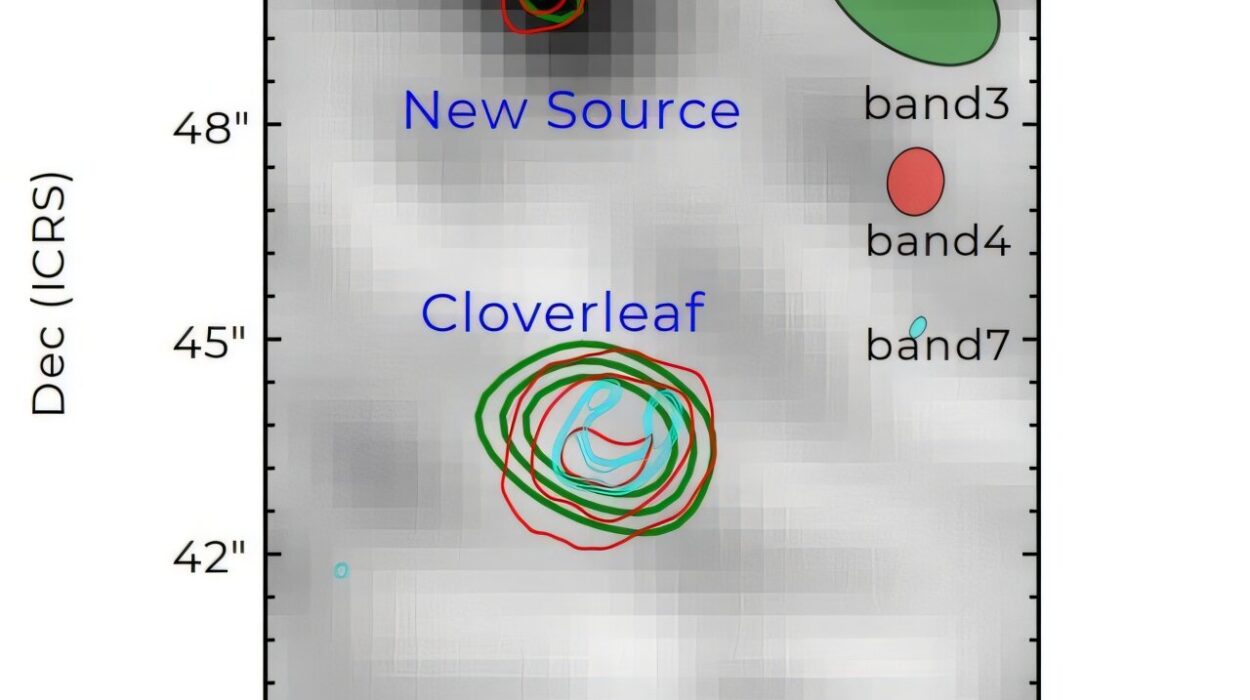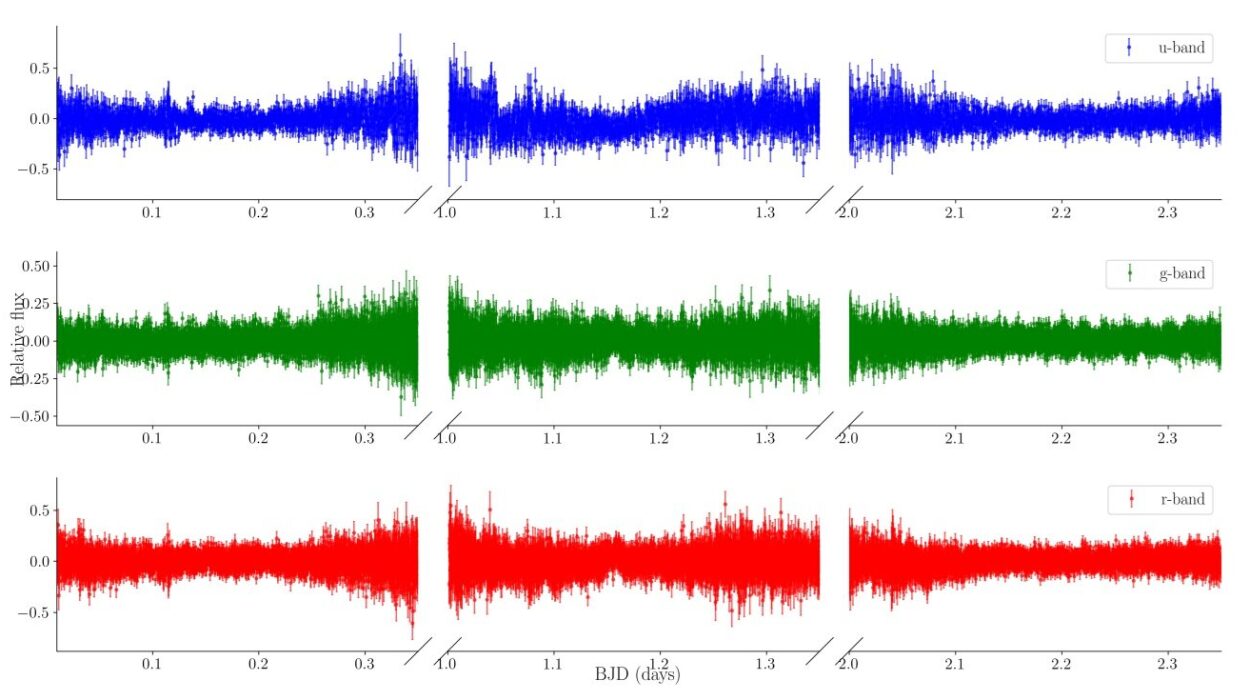Deep in the cosmos, a pulsar is quietly spinning, its beams of electromagnetic radiation cutting through the vast emptiness of space. This pulsar, known as PSR J1951+2837, has caught the attention of astronomers around the world. In a breakthrough study, scientists from Russia and China used advanced telescopes to observe this peculiar star in greater detail than ever before. The results, published on November 18, reveal an unexpected and fascinating behavior from this pulsar, raising new questions about how these mysterious objects work.
Pulsars are extraordinary celestial objects. They are the remnants of massive stars that exploded in a supernova, leaving behind a dense, rapidly rotating core. This core, known as a neutron star, is highly magnetized and emits beams of electromagnetic radiation. As the pulsar spins, these beams sweep across the sky like a cosmic lighthouse, creating bursts of radio waves that can be detected from Earth. Most pulsars have incredibly fast periods, rotating several times per second. But PSR J1951+2837 is different. Unlike the typical high-speed pulsars, it rotates at a much slower pace—once every 7.33 seconds. For astronomers, this slower rotation offers a rare glimpse into a part of the universe we still don’t fully understand.
The Mystery of PSR J1951+2837
PSR J1951+2837 was first discovered in 2024, when a team of astronomers led by Tatiana V. Smirnova at the Pushchino Radio Astronomy Observatory spotted it using the Large Phased Array (LPA) telescope. The pulsar’s relatively long period was immediately intriguing. Unlike faster pulsars, which are often seen in bursts of intense radio emissions, PSR J1951+2837 seemed to be more subtle. This made it a prime candidate for further investigation.
With funding and resources from the Russian and Chinese space agencies, Smirnova and her team expanded their observations. Using the LPA at a frequency of 110 MHz, they studied the pulsar’s emissions on a daily basis. But they didn’t stop there. They turned to the Five-hundred-meter Aperture Spherical Radio Telescope (FAST), one of the largest radio telescopes in the world, to look at the pulsar at a higher frequency of 1,250 MHz. The team made multiple observations of PSR J1951+2837 throughout 2023 and 2024, using both the snapshot and tracking modes of FAST’s 19-beam L-band receiver.
The results were eye-opening. “Naturally, PSR J1951+2837 falls into one of the LPA beams every day, and the LPA records data of PSR J1951+2837 daily at a frequency of 110.4 MHz,” Smirnova’s team explains. This constant stream of data helped the scientists track the pulsar’s behavior over time and get a clearer picture of its unusual characteristics.
A Pulsar with a Twist
While most pulsars emit regular bursts of radio waves, PSR J1951+2837’s emissions were irregular. The team detected a total of 343 pulses across 228 LPA observation sessions, with only five strong pulses appearing during two FAST sessions. These irregular bursts raised an intriguing question: Could PSR J1951+2837 be a new kind of pulsar? Could it belong to a subclass known as rotating radio transients (RRATs)?
RRATs are a type of pulsar that, like PSR J1951+2837, have highly sporadic emissions. Their pulses can appear unexpectedly, often with long periods of silence between them. RRATs have perplexed astronomers since their discovery, as they seem to exhibit the same basic properties as regular pulsars, but with bursts of activity that are much more erratic. “The emission features of PSR J1951+2837 are consistent with those of rotating radio transients,” the researchers noted. This suggests that PSR J1951+2837 might not just be a slow-moving pulsar, but a new type of radio transient altogether.
Faint, Polarized, and Full of Surprises
Beyond its irregular bursts, PSR J1951+2837 revealed even more unexpected traits. For one thing, its luminosity—the brightness of its radio waves—is the lowest ever recorded for a pulsar. At 110 MHz, its luminosity measures just 0.48 mJy kpc², far dimmer than the intense emissions typically associated with these stellar remnants.
But it wasn’t just the faintness of the pulsar that stood out. The team also discovered that PSR J1951+2837’s radio waves are highly polarized. Polarization refers to the orientation of the electromagnetic waves, and in this case, the pulsar’s radio waves appear to be aligned in a specific direction. This is a striking feature, suggesting that the pulsar’s magnetic field is extraordinarily strong and well-ordered.
To add another layer of complexity, the study also revealed the Faraday rotation of PSR J1951+2837—a measure of how the pulsar’s magnetic field affects the rotation of the polarized radio waves. The team found the Faraday rotation to be −2.2 rad/m², a detail that adds more insight into the pulsar’s magnetic environment. The pulsar’s spectral index, which describes how its brightness changes across different frequencies, was measured to be around 2.9 in the 110–1,250 MHz range.
Why This Matters
So why does all this matter? At first glance, PSR J1951+2837 might seem like just another distant object in the sky, but its peculiarities are anything but ordinary. The irregular bursts, faint luminosity, and highly polarized emissions challenge existing theories about pulsar behavior and magnetic fields. If PSR J1951+2837 is indeed a new type of RRAT, it could open up an entirely new area of study within astrophysics.
By studying pulsars like PSR J1951+2837, astronomers hope to unlock some of the universe’s most elusive secrets. Pulsars serve as natural laboratories for testing our understanding of extreme physics—particularly the behavior of matter under intense gravitational and magnetic fields. They also help us explore the nature of the interstellar medium, the matter between stars, and how it affects the radio waves we receive from distant objects.
The discovery of PSR J1951+2837’s unusual properties marks a significant step forward in our understanding of these fascinating cosmic objects. It reminds us that, even in the most distant corners of the universe, there are still mysteries to uncover and surprises waiting to be found. With every new discovery, we are reminded of just how much there is still to learn about the strange and beautiful cosmos we call home.
More information: T. V. Smirnova et al, A nearby pulsar J1951+2837 observed by the LPA and FAST, arXiv (2025). DOI: 10.48550/arxiv.2511.14191






